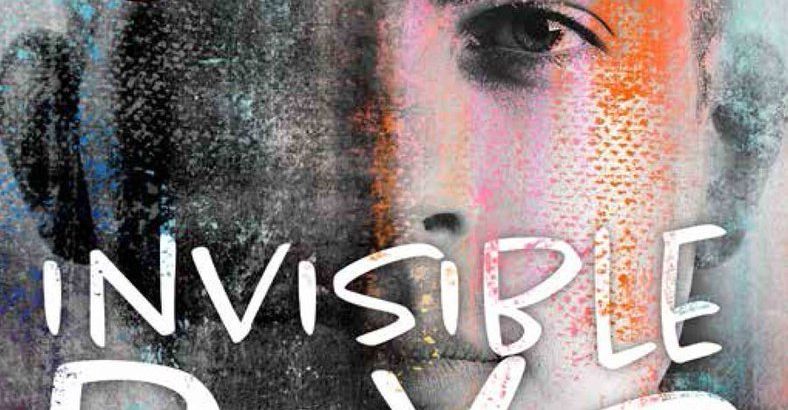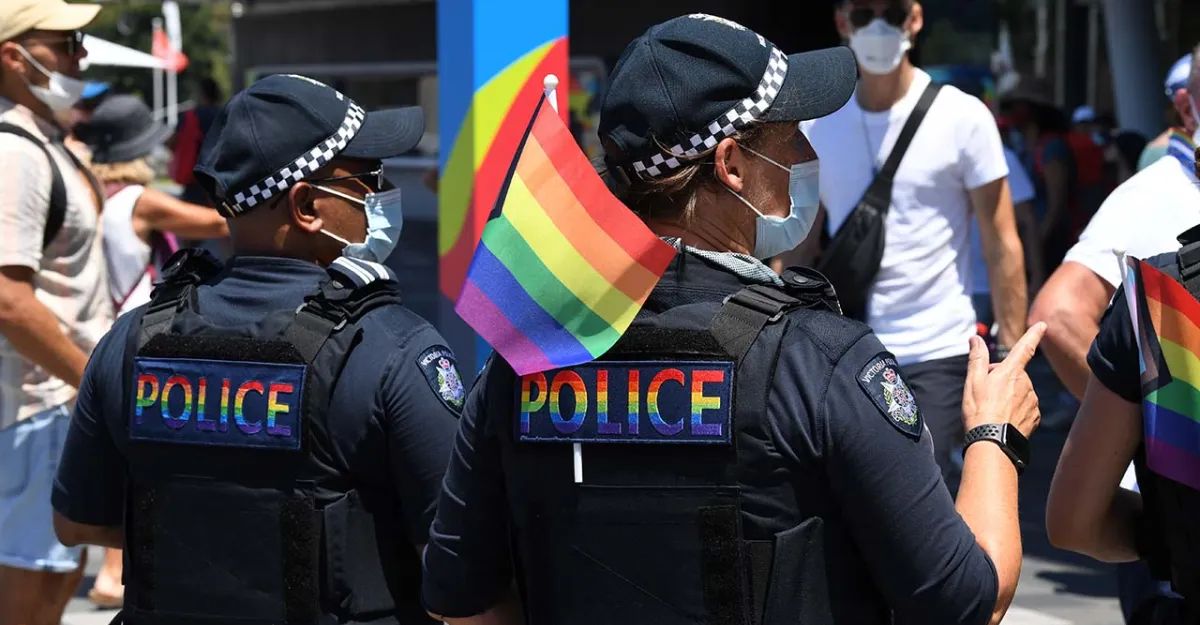The police raid at the home of Rowland Thomas, Crusader Hillis and Nik Dimopoulos, attached to the queer bookstore and community space Hares and Hyenas, has sparked condemnation and outrage from the queer community and others concerned with police abuse of power.
One of the first questions to emerge from the queer community following news of the raid was whether it was motivated by homophobia. The police have since denied this, as has Crusader Hillis. When police disclosed that Nik Dimopoulos was ‘mistakenly arrested’ in their search for ‘an armed member of a ‘Lebanese’ gang’, it seemed that Nik was targeted not because he was queer but because he appeared to fit a racial descriptor.
Yet, as author Omar Sakr pointed out on Twitter, the emphasis upon Nik’s innocence allows the racialised figure of the ‘Lebanese gang-member’ to remain the ‘proper’ target of police violence. By leaving aside the question of whether this violence would have been acceptable if it had been used against the body for which it was intended, we sidestep a conversation about racism and policing that we – as a wider community, but also a queer community – so urgently need to have.
Despite the supposed reassurance that the raid was not targeted at the queer community, LGBTIQ+ responses made clear that fear of state violence remains a reality for many of us.
This is not surprising, given the fraught relationship between LGBTIQ+ people and the police. Historically, police have aggressively pursued sexual and gender ‘deviants’. There are numerous examples of police targeting of queer lives, cultures and spaces that extend well beyond the so-called ‘de-criminalisation of homosexuality’ in Victoria in 1980. For instance, in one community survey of roughly nine hundred LGBT people conducted by Victorian Gay and Lesbian Rights Lobby in 1999, one quarter of cis men, one in seven cis women and more than half of the trans respondents reported experiences of discrimination or abuse in their dealings with police.
However, not everyone viewed the raid as part of that history. Some made it clear that they believed that policing was no longer an issue that LGBTIQ+ people face. And it’s not hard to see why they might have this impression.
Conventional images of white, middle class, and cis lesbian and gay people now frequently promote our respectability, our consumer power, and our ‘normalcy’. This reflects a political phenomenon often discussed in academic and activist circles as ‘homonormativity’. The promise of homonormativity is that – so long as we embody respectability – we will no longer face state persecution or social exclusion. However, respectability has always been a classed, raced, and gendered concept. Some queer lives and sexual practices will never fit within the neat monogamous-tax-paying-nuclear-family package promoted by many marriage equality campaigners.
In the wake of the raid, those who do not fit the homonormative ideal spoke out about their experiences with the police across social media. Some told stories of the violence inflicted upon them. Others shared how they had been subjected to homophobic or transphobic abuse and, when they tried to report it to the police, they were not taken seriously. These anecdotes are not isolated – research suggests police inaction or dismissal of LGBTIQ+ reports of abuse is an ongoing problem.
One recent study conducted by Gay and Lesbian Health Victoria with Same Sex Attracted and Sex and Gender Diverse youth uncovered accounts of discrimination from police that should raise concern. Some rural youth perceived their dismal treatment as a consequence of their lower-class status and family histories known to police. Others identified their sexual or gender diverse identity as the reason for having been dismissed or abused by police officers.
Unfortunately, as we far as we know the data on how race, ethnicity, class and disability affect the distribution of state violence for LGBTIQ+ people has not been systematically collected. Nor do we have a clear picture of the experiences with police of queer sex workers and drug users. It is clear, however, that it is overwhelmingly First Nations people – including queer First Nations people – who bear the brunt of the violence of the criminal legal system in Australia. And as such, any discussions of the policing of sexuality and gender cannot be divorced from discussions of policing as a settler colonial project.
One of the most frequent refrains heard in the wake of yet another exposé of police mistreatment of queer people is that ‘the police have worked hard to improve their relationship with the LGBTIQ+ community.’ Typically, this includes a nod towards internal police reforms, such as establishing training and Gay and Lesbian Liaison Officer programs, and more outward-facing symbolic gestures of ‘gay-friendliness’, such as rainbow flag raising ceremonies on IDAHOBIT day like the one held by Victoria Police just days after the Fitzroy raid – which was interrupted by protesters calling for solidarity with all communities targeted by state violence and an end to police ‘pinkwashing’.
Perhaps most frequently cited as evidence of ‘police progress’ is the fact that police forces now officially march in Pride parades, such as Mardi Gras and Midsumma. Yet the celebration of policing at these events is, and should be, heavily contested, given the ongoing fear and disdain for police within queer communities. At the 2019 Midsumma parade, Victoria Police was one of only two contingents to have a police escort (the other was the Liberal Party), which gives us an indication of their continued unpopularity. Indeed, in prior years police have been challenged, heckled and even blocked from marching in Pride by groups of radical queer activists.
In the aftermath of a raid that has increased the visibility of the violence of policing for those lucky enough not to be routinely exposed to it, queer communities need to be asking new questions about police use of our spaces, events and movement symbols to promote pride in policing. Not just because those who were victimised in this raid were queer, but because policing makes many in our broader community profoundly unsafe. No amount of rainbow flags can cover up this reality.
Special thanks to Lauren Caulfield who significantly contributed to the ideas presented here.
Image: Bondi Beach mural (detail), Flickr



